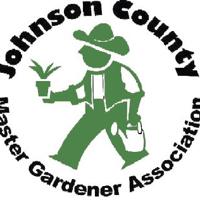Joyce Block: Wildfires, burn bans and gardening | Local News
While returning from a trip to Dallas last week, I noticed a huge plume of smoke as I arrived in Duncanville. I thought it was a fire west of Alvarado. I got an alert phone call from the town of Alvarado, but it didn’t come.
It was after I got home that I saw there was a huge fire near Farm-to-Market Route 3136. Johnson County Emergency Management called in air tankers to bring the fire under control.
The Johnson County Commissioners Court voted for a burning ban on June 17 that will expire on September 14. Our drought conditions continue. There was also a declaration of disaster due to the threat of forest fires filed on June 29.
Although there were a few random rain showers in the county, nothing measurable fell. At Cleburne Airport, there has been no measurable rain since May. According to the National Weather Service, we may only have an occasional storm over the next week.
Just an example of the extent of these storms – on Saturday I had thunder, but no rain. While my mother-in-law from Grandview had 0.22 inches, another master gardener friend had wind, hail and driving rain.
Lake levels are beginning to drop, Lake Pat Cleburne is down six feet while Lake Whitney is down five and a half feet. While many “new” Texans wonder what’s going on, those of us who are natives or have been here a while understand that heat and drought occur in a cycle. So what’s a gardener to do?
First of all, in Texas we can still harvest rainwater. Unlike other states, it has not been declared illegal. Even a small amount of rain can fill a rain barrel, or even a bucket when placed under the eaves of your home. I have two 55 gallon drums that we have had for years. We redid them a few years ago, but I have about seventy gallons of rainwater left. Building a rain barrel is easy, find a food grade barrel, drill, outdoor faucet, plumber’s tape and saw.
Instructions are at tamu.edu/media/making a rain barrel. Using contractor grade pipe and setting one barrel on two levels of cement blocks and the other on bricks allows the water to drain by gravity.
Yes, I believe we will have rain this fall, even with La Nina in charge. I use the water for areas where I don’t have a soaker pipe, a bed of weeds.
Second, mulch, mulch and mulch. Wood mulch, grass clippings and straw are great ways to control weeds in your gardens. The other benefit is that they retain moisture around the root zones of your plants.
Third, soaker pipes or drip irrigation will put the water where it is needed. Especially when we have water restrictions for irrigation systems. Currently, many cities restrict watering between 10 a.m. and 6 p.m.
Watering by hand with a hose, or watering can be done outside these hours. Many cities also limit the use of irrigation systems to twice a week. Check your local city or Johnson County Water District for more information.
Fourth, plant native and adapted plants. Unfortunately, many vegetables are not in this classification and require about an inch of water per week. Reduce that watering to a long, low, slow watering a few times a week and your tomatoes should survive. More on fall gardening next week!
Salvias, crape myrtles, irises and daylilies are some of the hardiest plants you can plant. I have an Iris bed that only gets rainwater, and they are doing well, as are my Salvias. We just gave the Crape Myrtles a long slow drink as they were stressed. The leaves were curling up and falling off the plant. If this continues to happen, the plants should be fine. When we get rain in the forecast, a high percentage, add fertilizer to the area around them to help them recover.
For more information, visit the Texas Agri Life Extension website and tamu.edu for information on how to conserve the water we have.
In the meantime, stay cool, be safe, be healthy, and keep gardening.
Joyce Block is a master gardener in Johnson County and tries gardening in Alvarado.


Comments are closed.